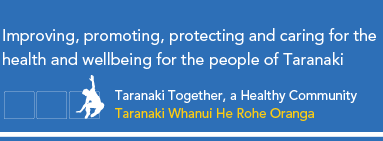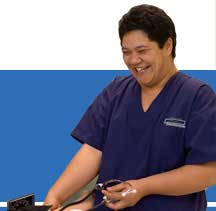Stroke Awareness Week,
5 - 11 September 2011
5 September 2011
Brian ‘Sarge’ Walden could have been dead or permanently paralysed as a result of a massive stroke two years ago. Instead, the quick action of a passing neighbour meant he was sitting up in a hospital bed reading Stroke Foundation literature barely an hour after its onset. And today the former TVNZ production manager is an active gardener, enjoying life to the full.
Brian’s story is a vivid illustration of the potentially life-saving benefits of the Stroke Foundation’s FAST campaign which aims to educate people about the symptoms of stroke and the urgency of seeking emergency treatment.
Stroke Awareness Week is all about spreading the FAST message as widely as possible, because stroke happens to 21 people in New Zealand every day.
Brian’s full story is below. If you would like to interview Brian or find out more about stroke and Stroke Awareness Week contact:
Fraser Pettigrew, Stroke Foundation Communications and Promotions Manager
04 815 8124 / 027 506 9822
fraser_pettigrew@stroke.org.nz
Brian Walden's Story
Brian ‘Sarge’ Walden could have been dead or permanently paralysed as a result of a massive stroke two years ago. Instead the quick action of a passing neighbour meant he was sitting up in a hospital bed reading Stroke Foundation literature barely an hour later. And today the former TVNZ drama production manager continues to help out with maintenance gardening, enjoying life to the full.
Brian’s story is a vivid illustration of the potentially life-saving benefits of the Stroke Foundation’s FAST campaign which aims to educate people about the symptoms of stroke and the urgency of seeking emergency treatment.
Sixty four year old Brian was working on the garden of an unoccupied house in Auckland’s Mission Bay in September of 2009. Having finished on the front lawn he was about to move round to the back of the house when the next door neighbour and her 14 year old son drew up in their car. Moments later he would have missed them. Brian walked over to say hello, but their conversation never got as far as the usual exchange of pleasantries.
“Are you feeling alright?” asked the woman, as she stared horrified at Brian.
“Yeh, why?” replied Brian, mystified.
“Because I think you’re having a stroke!”
“Wouldn’t I know all about it if I was having a stroke?” laughed Brian, but what he couldn’t see was that one side of his face was collapsing and contorting, and he was also oblivious to the slurred mumbling of his speech. It was Brian’s good fortune that the neighbour knew exactly what it signified, got him to lie down, and got her son to run inside and phone an ambulance.
Brian’s second slice of luck was the response of an ambulance which had just finished another call nearby and had him in Auckland City Hospital in a matter of minutes. There he was scanned and given the green light for the administration of clot-busting thrombolytic drugs. With the blockage removed and the damage to his brain minimised, Brian was soon on the road to recovery, sitting in the hospital’s stroke unit reading more about stroke than he ever knew before and impressing doctors with his new-found understanding of thrombolysis.
Sadly not all stroke cases end as happily as Brian’s. Were it not for the vital knowledge of the neighbour who recognised his symptoms and his swift delivery to a hospital stroke unit with instant access to scanning facilities Brian might have ended up like many of the thousands of New Zealanders who are left with permanent and life-changing disabilities after a stroke. Or he might have ended up as one of the 2,000 who die from stroke every year.
FAST campaign
That’s why the FAST message is so important. Unfortunately research has shown that one in three New Zealanders are unable to recognise a single symptom of stroke. A further one in four can only recognise one symptom. Fewer than one in ten Kiwis are capable of naming three symptoms.
By learning the simple FAST symptom check, however, you could easily remember three of the main symptoms and help to save a life.
FAST stands for Face – Arms – Speech - Time:
Face – Look at the person’s face and ask them to try and smile; is one side drooping?
Arms – Ask them to raise both arms; is one side weak?
Speech – Ask them to say something simple; are they unable to speak or are the words jumbled or slurred?
Time – Act fast and call 111. Time lost may mean brain lost.
By memorising this simple symptom check everyone should be able to recognise a stroke, and by getting the person to a hospital as quickly as possible you can help reduce the unnecessary toll of death and disability.
STROKE FACTS AND FIGURES
- Stroke is the third largest killer in New Zealand after heart disease and cancer.
- Each year around 7600 people suffer a stroke – that’s around 21 New Zealanders every day.
- Each year over 2000 people die from stroke
- Disabilities from stroke make it one of the highest consumers of hospital beds, services and community support in this country.
- There are an estimated 45,000 stroke survivors in New Zealand, many of whom have disability and need significant daily support.
- A stroke is a sudden interruption of blood flow to the brain, causing brain cell damage. Basically, it is a brain attack.
Recognising Stroke Symptoms
- Delayed recognition of a stroke means delayed medical intervention – which can have tragic consequences, including further damage to the brain or death.
- In 2007 and 2010, the Stroke Foundation commissioned research to assess the general public’s ability to recognise the signs of stroke and to act appropriately if a stroke is suspected.
- The results from both surveys showed that at least one third of New Zealanders were unable to recognise even one sign of stroke.
- Only about 10 percent of respondents could recognise three correct signs of stroke.
Act FAST
The FAST acronym was developed by stroke researchers in the United States as an effective way for people to recognise three key stroke symptoms and to act fast if a stroke is suspected. Subsequent evaluation of the FAST message by researchers in the US found it sufficient to pick up 88.9 percent of strokes and TIAs (mini strokes).
Other international evaluations of FAST have found that it is an effective mnemonic for increasing and retaining knowledge of the key signs of stroke and the importance of acting fast.
For more information on stroke see www.stroke.org.nz
Last updated: Tuesday, November 12, 2013



